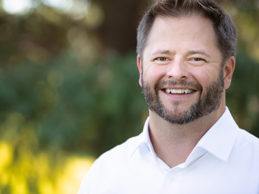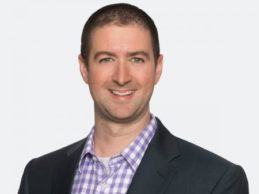Telehealth has quickly transformed the healthcare industry. Rather than scheduling an appointment, waiting up to a few weeks, and going to a doctor's office or another healthcare facility, we can now access many types of care from the convenience of our smartphones.
However, telehealth has also brought in its own set of new challenges that must be overcome for it to be successful in the long term. Below, we explore five of the biggest issues telemedicine faces and offer insights on how
Read More
5 Critical Considerations for Patient Privacy in Telehealth
The COVID-19 pandemic has had a tremendous ripple effect across all industries, with one of the most impacted being healthcare. Providers have had to quickly adapt to supporting patients ‘virtually’ in a secure manner, while simultaneously developing procedures to support accurate reporting to government organizations. These changes have placed added pressure on security and privacy professionals, as they struggle to keep up with urgent demand.
Mature healthcare organizations already have
Read More
Telehealth Platforms: 5 Pillars of Patient-Centric Design
To accelerate the adoption of telehealth services and remote health platforms, the patient-centric design is a must. By paying attention to five key areas, you can develop a telehealth solution that works for the most important users: the patients.
There are several universal challenges in delivering telehealth solutions, including a lack of patient adoption. It’s a reasonable reluctance:
- Healthcare has always been delivered in-person.
- Trusting sensitive information to devices
Read More
How COVID-19 is Driving Changes in Hospital Safety Through Technology
COVID-19 has had a tremendous impact on all of us, and it’s likely that many aspects of our daily lives will never return to “normal.” In the same way that we scoff at the notion of driving cars without seatbelts today, we’ll likely feel the same about many other previously normal things we did pre-pandemic.
This will most certainly include the way we manage high-risk spaces where there’s close contact and a higher than average risk of infection - like hospitals, airports, retail stores,
Read More
Avoid COVID-19 Modeling Pitfalls by Eliminating Bias, Using Good Data
COVID-19 models are being used every day to predict the course and short- and long-term impacts of the pandemic. And we’ll be using these COVID-19 models for months to come. While many of us in healthcare are not epidemiologists or data scientists, we’re all sifting through the data to get a handle on how many people are going to get sick, how many will end up in the hospital or on a ventilator, and ultimately, how many people will die.
Government agencies are using models to set public
Read More
How ADT-Based E-Notifications Can Enable Better Safety for COVID-19 Patients
As COVID-19 continues to impact the country, providers across the continuum face new challenges delivering care and ensuring safety for their patients and themselves. During this period, sharing real-time information about patients’ care encounters across provider types and care settings matter more than ever. In particular, hospitals sharing admission, discharge, and transfer (ADT) events with COVID-19 patients’ community-based providers is critical to ensure the best treatment course and
Read More
Cybersecurity: Managing Risk in the COVID-19 Era
Healthcare IT consultants’ work involving health records may expose them – and their provider and payer clients – to regulatory, legal, financial, and reputational risk. These risks are potentially higher in the COVID-19 era, with many of their employees working from home and accessing sensitive records and networks from remote locations. According to the US Department of Homeland Security (DHS), there is a heightened risk of phishing, SMS phishing and other attacks using COVID-19 themes, and
Read More
Call to Action: Restrictions Around Virtual Health Can’t Go Back to “Normal”
As a result of the COVID-19 pandemic, the federal government has passed several stimulus packages with the goal of helping employers keep their business in operation while office volume is down and, in some cases, practices are physically closed. The CARES Act, which included the Paycheck Protection Program (PPP) and Provider Relief Fund, for example, has provided some relief to eligible healthcare providers, including low-interest rate loans to help providers pay staff salaries, rent, and other
Read More
Virtually or In-Person, Automation Improves The Healthcare Experience
The COVID-19 pandemic has caused an unprecedented shift in the way consumers view and access a variety of goods and services—and healthcare is no exception. Recent studies show that many patients, including vulnerable populations like those living with cancer, are delaying recommended care and procedures—and will continue to do so for at least several months amid fears over the safety of in-person visits. In response, reports of providers adapting to offer care virtually are all the more
Read More
Telehealth’s Time Has Come. And It’s Here to Stay.
“The numbers don’t lie,” is a famous old adage and quite appropriate with regard to the rapid rise and deployment of telehealth solutions in the medical community. It may have taken a global pandemic for society to recognize and investigate the rewards of its adoption, but statistics reveal that telehealth’s moment has indeed come. And it certainly seems like it’s here to stay.
How did we come so far, so fast? By undertaking forward-thinking policies and bold action, the health care industry
Read More











